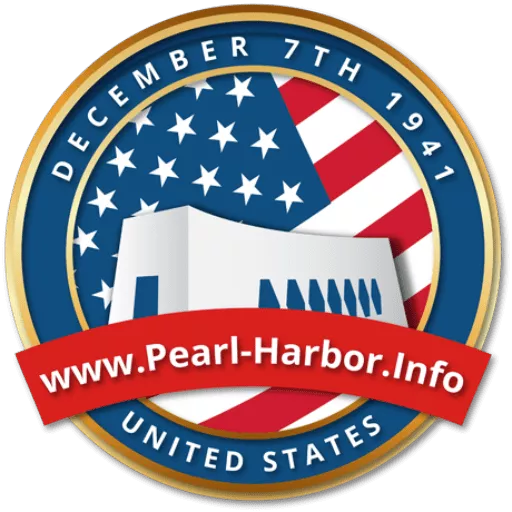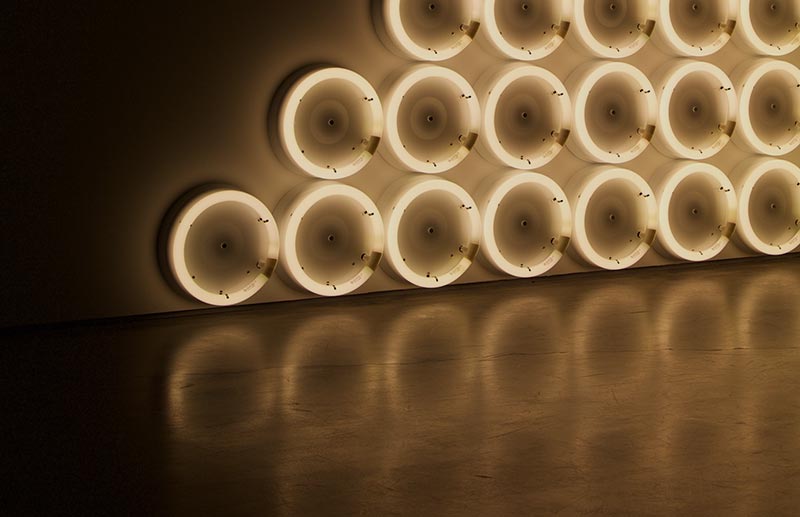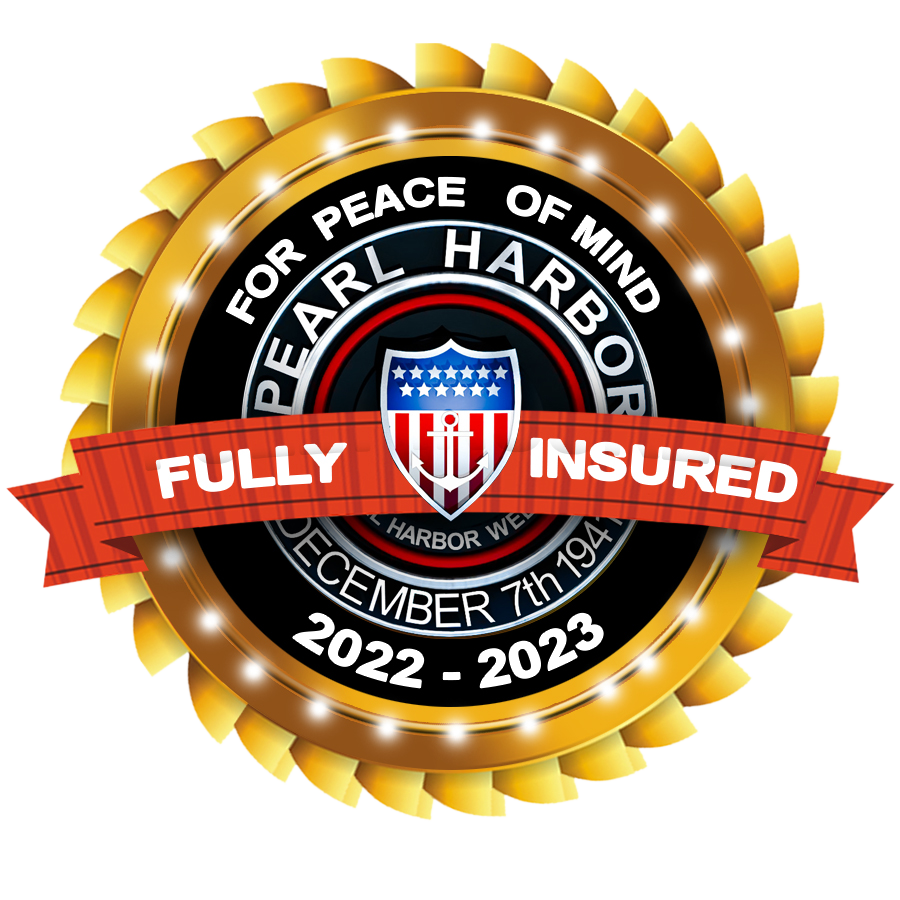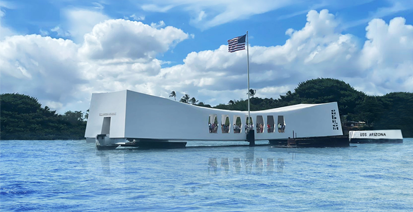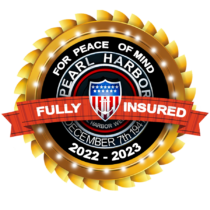The History Of The USS Arizona Memorial
There is a reason why the USS Arizona Memorial is the number one most visited destination on Oahu; millions of visitors from all over the world come to this majestic place to see for themselves where World War II began for the United States. This patriotic and emotional destination was created to honor those who died on Dec 7th, 1941.
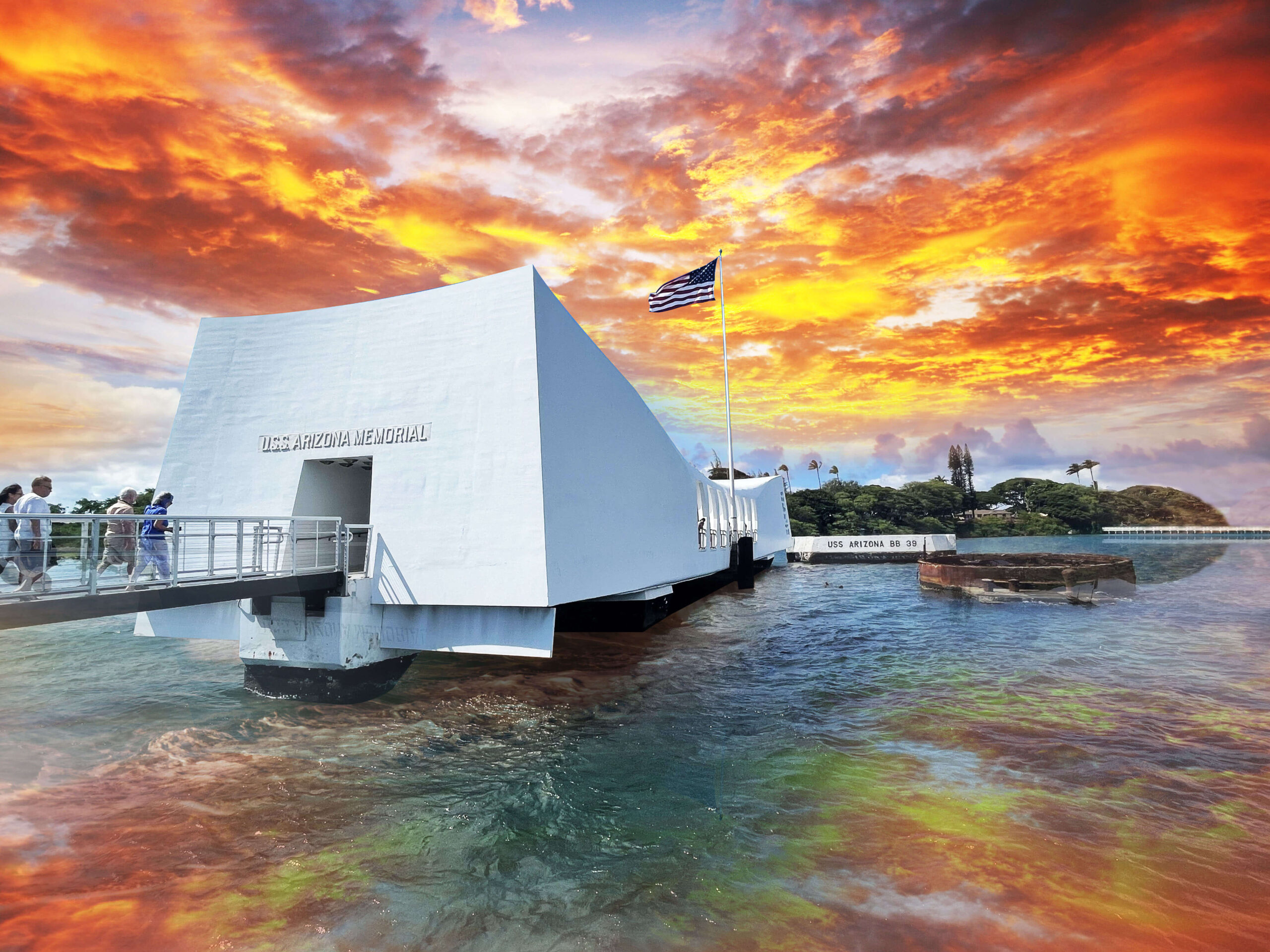
The ramp leading to the entrance of the USS Arizona Memorial Monument. The Arizona Memorial Monument was built in 1962.
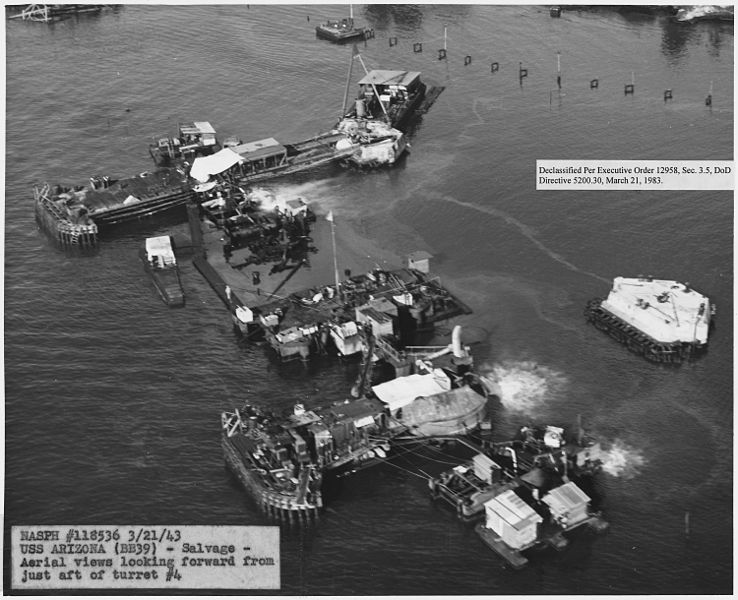
NAPSPH# 118536 USS Arizona (BB39)- Salvage Aerial views looking forward from just aft of turret #4, Department of the Navy. Fourteenth Naval District. Naval Air Station, Pearl Harbor (Hawaii). (ca. 1940 – 09/1947), Photographer (NARA record: 1130789, U.S. National Archives and Records Administration, PD-USGov
During and directly following the end of WWII, the Navy removed battleship Arizona’s wrecked superstructure that was sticking out of the water. Naval divers salvaged a few of her big guns that were not damaged in the blast.
The Memorial marks the resting place of Battleship Arizona, and its 1,102 crew members are still entombed in the sunken ship. Even before the Memorial or the Pearl Harbor Visitor Center was built, the Navy allowed retired service members and Pearl Harbor Survivors to take visitors out to the USS Arizona Memorial by small boats to pay their respects to these fallen heroes. These tours became so popular that the Navy soon received requests for a permanent memorial structure.
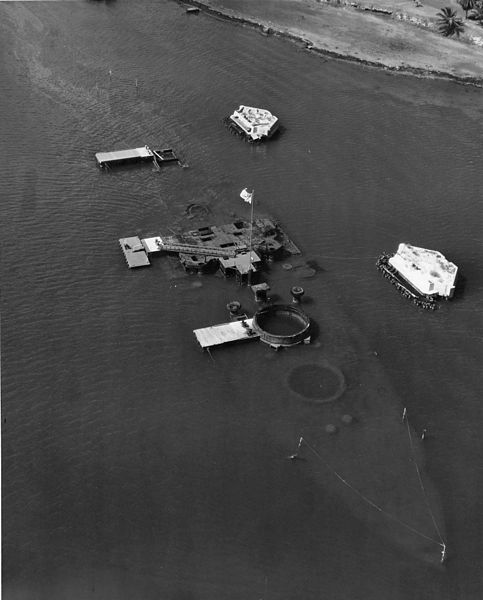
Aerial view of the hull of the U.S. Navy battleship USS Arizona (BB-39) taken during the 1950s prior to the construction of the USS Arizona Memorial, U.S. Navy, U.S. Navy National Museum of Naval Aviation photo No. 1996.488.029.056, PD-USGov
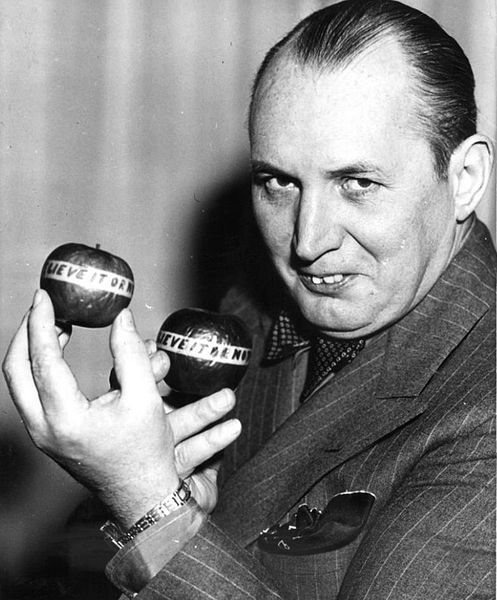
Photo of Robert Ripley, the creator of Believe It or Not., Press release says “From Ripley Office”, eBay itemphoto frontphoto back, PD-PRE1978
Robert Ripley of “Ripley’s Believe It or Not” visited the site in 1942. Then in 1948, Robert Ripley did a radio show from Pearl Harbor that started his campaign for a permanent memorial so visitors could disembark their boats and pay their respect while looking down at the sunken ship. He and his associates approached the Department of Navy and wrote many letters to different Admirals and Congressmen. Unfortunately, Ripley’s concept was rejected due to his high-cost design.
Then In 1949, the Navy founded the Pacific War Memorial Commission to determine how a Memorial could be built over the USS Arizona. Admiral Arthur W Radford, commander of the Pacific Fleet, started a tradition that is still in effect today: an American flag is hoisted and lowed each day over the sunken ship. His original flagpole was attached to the main mast of Arizona. He had his sailors sail out to the USS Arizona Memorial each day and raise and lower the colors; later, this tradition was continued by the National Park Service on the Memorial after it was built.
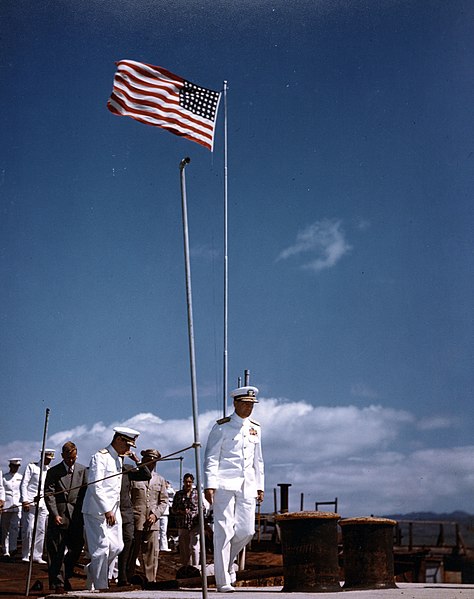
80-G-K-11244 (Color): Admiral Arthur W. Radford, USN, Commander in Chief, Pacific, and CinC, Pacific Fleet. Leads the procession during memorial services on board the wreck of USS Arizona (BB-39), 7 December 1950, on the 9th anniversary of the Japanese attack on Pearl Harbor. Official U.S. Navy Photograph, now in the collections of the National Archives. (2015/12/29)., National Museum of the U.S. Navy, 80-G-K-11244 (Color), PD-USGov
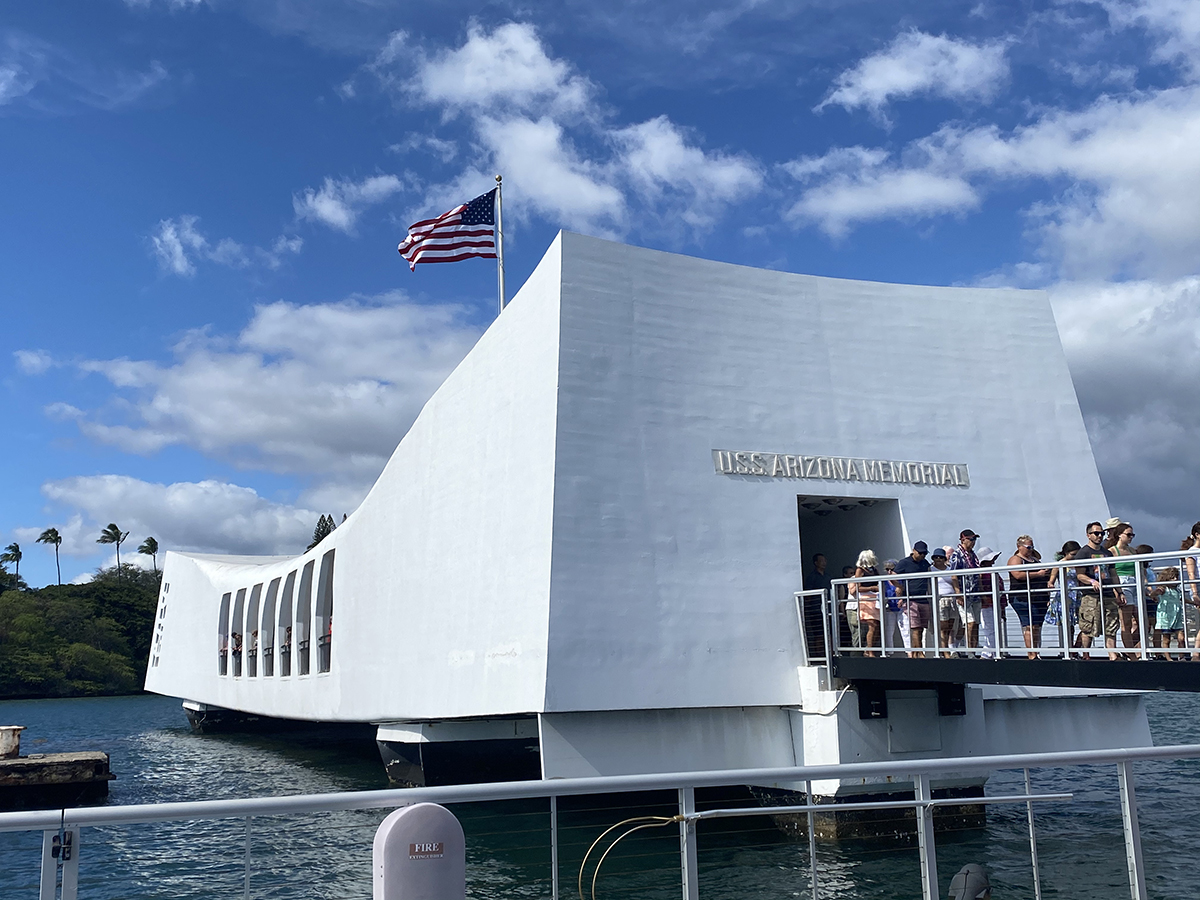
Passengers entering the Arizona Memorial Monument at Pearl Harbor. The Arizona Memorial Monument has been receiving visitors since 1962.
On Memorial Day, March 30, 1962, the Battleship Arizona Memorial was officially dedicated by Texas Congressmen and Chairmen of Veteran Affairs Olin Teague and Governor John A Burns. The Memorial was later listed on a National Register of Historic Sites in 1966, and the USS Arizona Memorial was listed as a National Historic Landmark in 1989.
The joint administration of the USS Arizona Memorial was signed between the US Navy and the National Park Service on Sept 9, 1980. Under this agreement, the National Park Service would operate the Memorial and the Pearl Harbor Visitor Center. Their responsibilities include the maintenance of the two docks and the upkeep of the Memorial. The National Park Services organization at Pearl Harbor has a Superintendent, Pearl Harbor Historian, Interpretative Rangers, Administration, Maintenance, Educational Rangers, and a well-equipped police unit.

The entrance sign to the Pearl Harbor National Memorial. The sign denotes that the facility in Pearl Harbor is administered by the National Park Service.
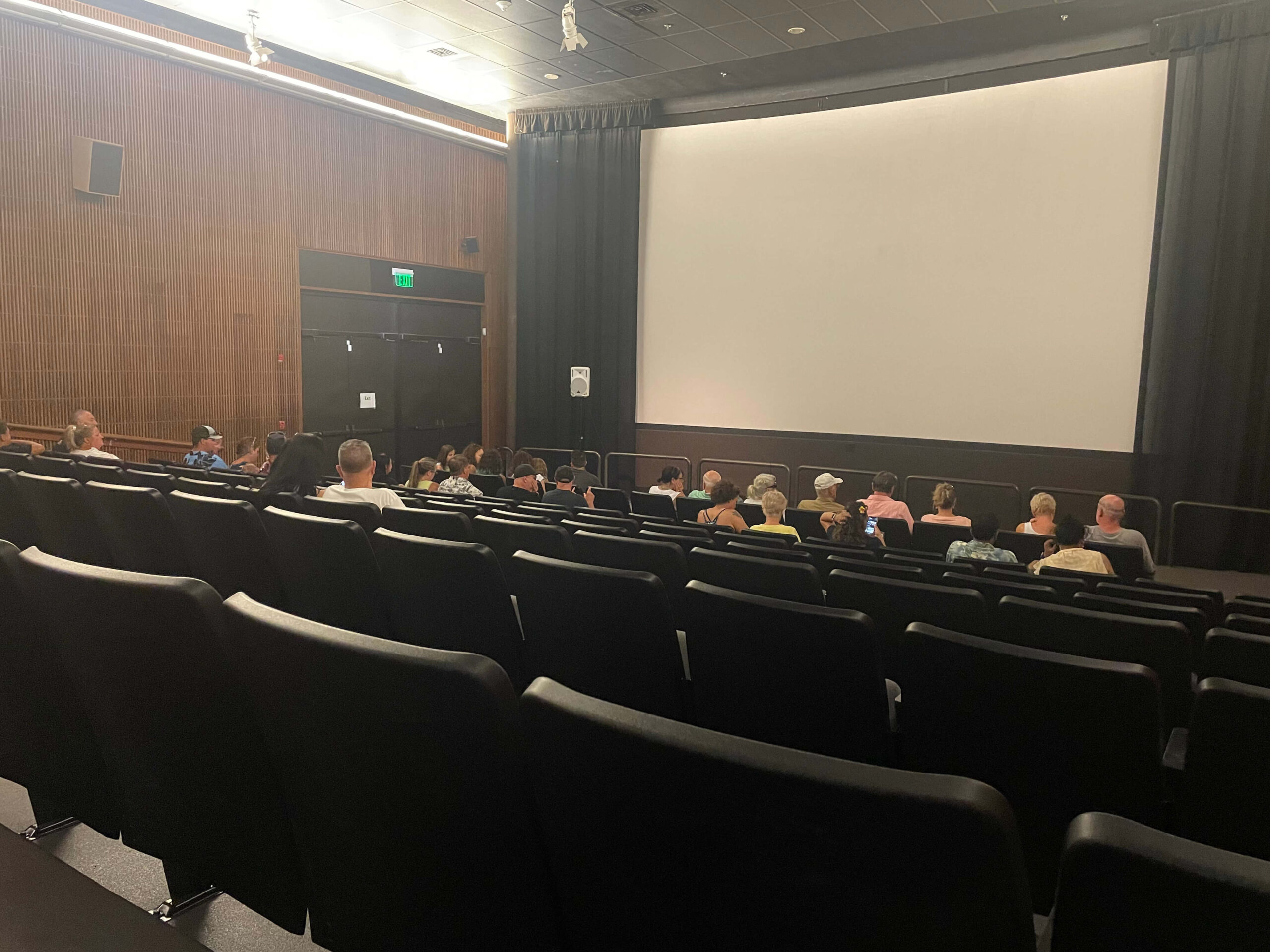
The inside of the Arizona Memorial Theater. Prior to going to the Arizona Memorial Monument, visitors view a 23-minute film providing context for the USS Arizona Memorial.
USS Arizona Memorial Tours are offered daily, except for Thanksgiving, Christmas, and New Year’s Day, from 8 am to 3 pm. Visitors first experience a 23-minute documentary on the history of politics, the people, and the attack on Oahu on Dec 7, 1941.
After the film, visitors depart through the back of the two theaters and board a 150-passenger Navy-operated launch to the USS Arizona Memorial. The ride is only 5-8 minutes to the Memorial, and since it’s, in Pearl Harbor, the water is usually very smooth. The vessel will then dock at the Memorial, and the guests have 15 minutes to visit the Memorial. The guests are then returned to the Visitor Center; the entire tour takes 60 minutes, but all the Natural Park Service websites and brochures say 75 minutes. The extra 15 minutes is leeway for bad weather or any other short delays that may occur.
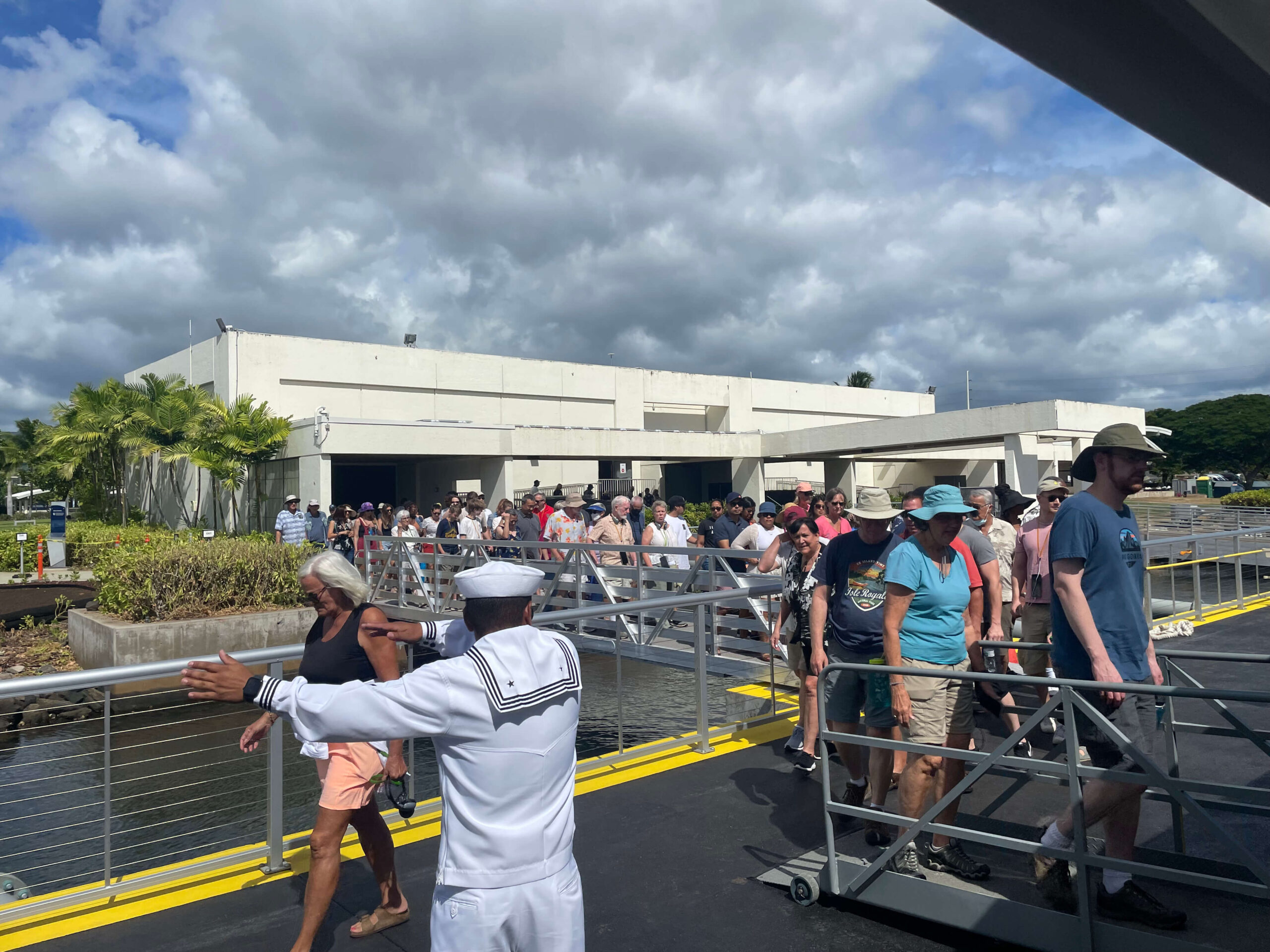
Visitors to Pearl Harbor boarding the US Navy operated shuttle heading to the Arizona Memorial Monument.

The US Navy operated a shuttle boat heading returning to the Pearl Harbor Visitor Center from the Arizona Memorial Monument. The USS Missouri battleship can be seen in the background.
The US Navy is responsible for the USS Arizona Memorial boat shuttles at a considerable annual cost, which includes the cost of the crew, maintenance, and fuel. The Navy has five boats in this program; two are used on any given day, and the others are used as backups.
